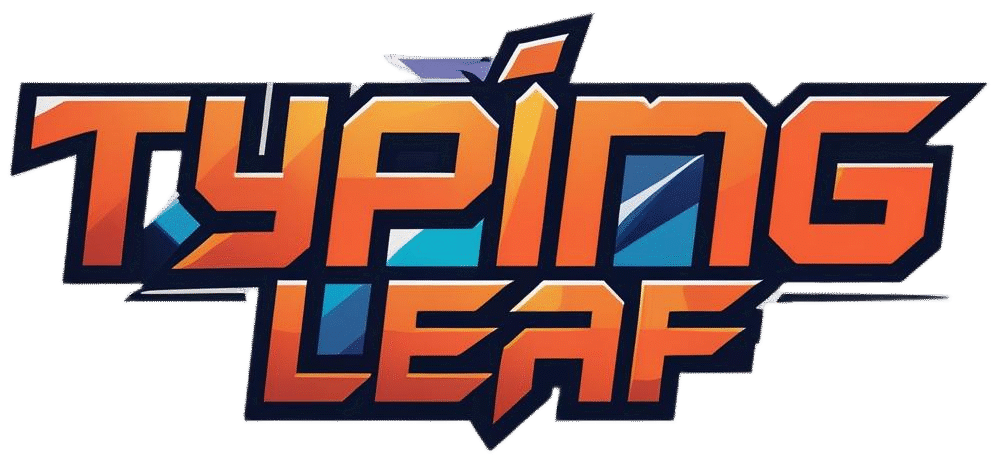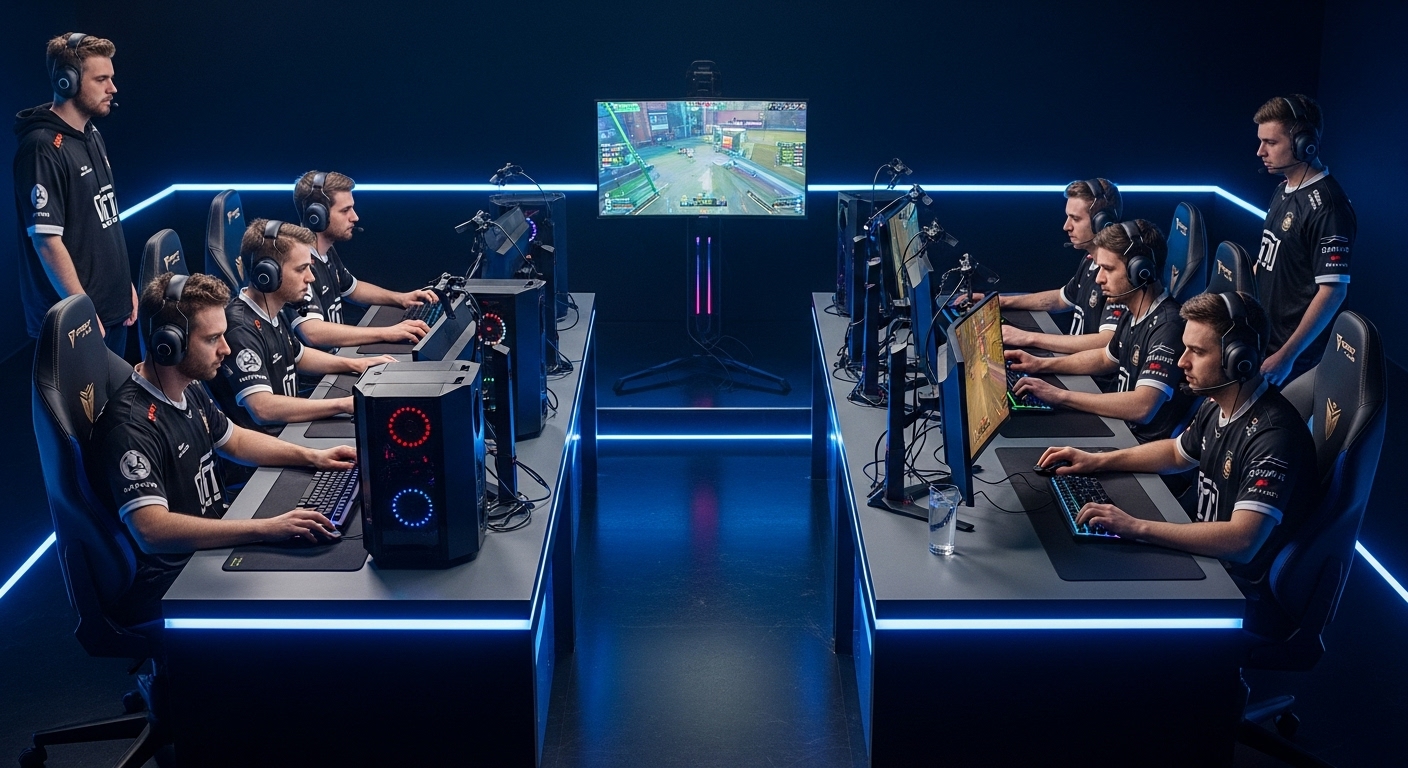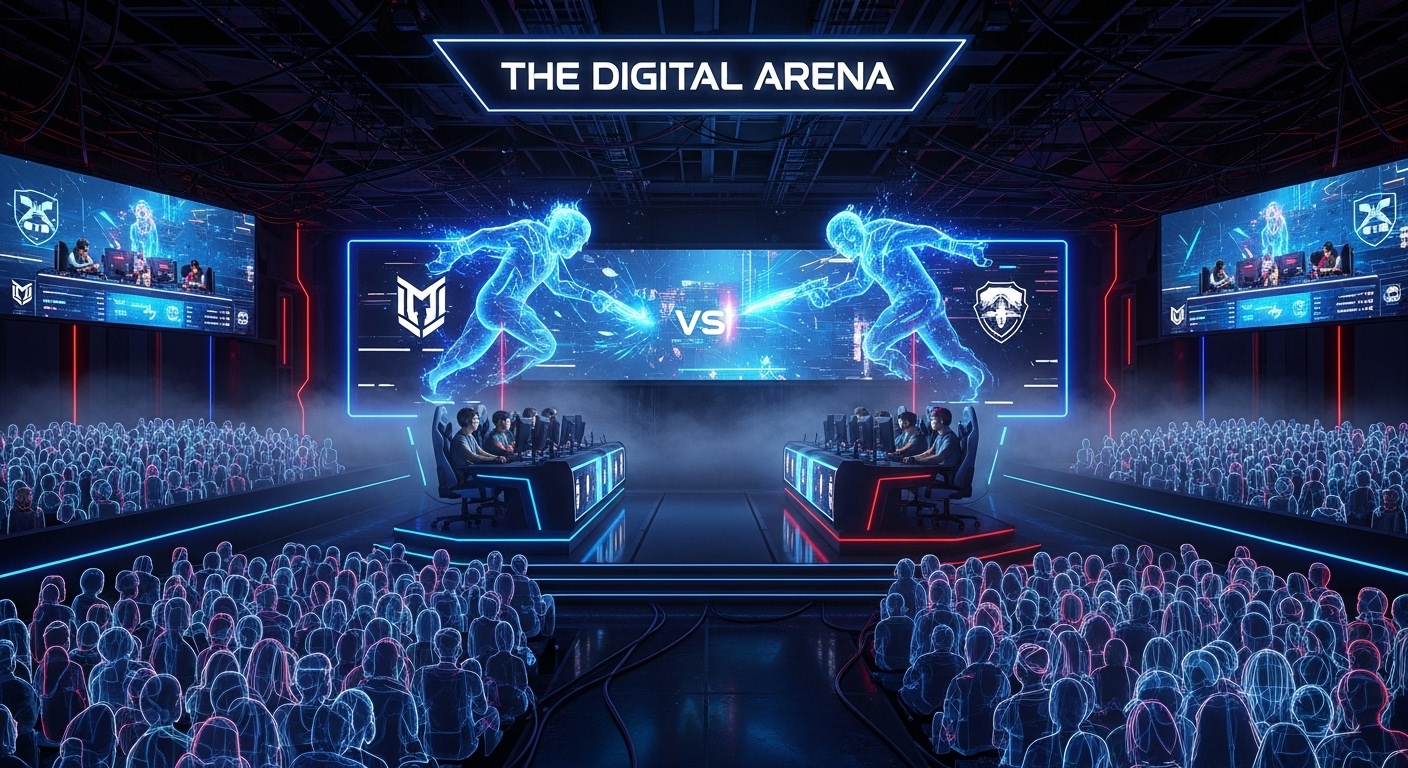Esports, or competitive gaming, has grown from a niche pastime into a global phenomenon, captivating millions of players, viewers, and investors around the world. Once confined to arcades and small local tournaments, esports has transformed into a multi-billion-dollar industry, complete with professional teams, sponsorships, streaming platforms, and international competitions. Its rise reflects not only the growth of video games as a form of entertainment but also the integration of technology, media, and culture into modern sports.
This blog explores the evolution of esports, its economic and cultural impact, the structure of competitions, the role of technology, and the future of competitive gaming.
The Origins of Competitive Gaming
The roots of esports can be traced back to the 1970s and 1980s, when video games began to gain popularity among younger audiences. Early competitions were often informal gatherings at arcades, schools, or local gaming centers. Players competed in games like Space Invaders, Pac-Man, and later Street Fighter and Mortal Kombat.
One of the earliest recognized competitive gaming events was the Space Invaders Championship held in 1980 in the United States. Thousands of participants competed for prizes, laying the foundation for organized gaming competitions. These early events demonstrated the potential for video games to foster community and rivalry on a larger scale.
As gaming technology advanced, competitive gaming transitioned to home consoles and personal computers, allowing broader access and the formation of online communities. This shift set the stage for the professional esports industry we see today.
The Rise of Online Gaming and Early Esports Communities
The proliferation of personal computers and the internet in the 1990s accelerated the growth of competitive gaming. Multiplayer games such as Doom, Quake, and Counter-Strike enabled players to compete against each other across networks, creating virtual arenas for skill-based contests.
Online forums, chat rooms, and gaming websites provided spaces for communities to organize tournaments, discuss strategies, and share highlights. These early online esports communities played a critical role in establishing competitive gaming as a serious pursuit.
In parallel, arcade-style tournaments continued to thrive, particularly in Asia. Games like StarCraft in South Korea gained immense popularity, contributing to the country’s deep-rooted esports culture. Professional teams, dedicated arenas, and televised matches began to emerge, demonstrating that esports could rival traditional sports in both entertainment value and competitive intensity.
The Professionalization of Esports
The early 2000s marked a turning point, as esports began transitioning from amateur competition to professional industry. Organizations such as Major League Gaming (MLG) in North America and the Electronic Sports League (ESL) in Europe provided structured platforms for players to compete professionally.
Professionalization involved multiple elements:
- Teams and Organizations: Players began forming dedicated teams, complete with coaches, analysts, and support staff. These organizations signed contracts, offering salaries and benefits similar to traditional sports.
- Sponsorships: Brands recognized the marketing potential of esports, sponsoring tournaments, teams, and individual players. Companies from technology, energy drinks, apparel, and entertainment sectors invested heavily in competitive gaming.
- Prize Pools: The size of prize pools increased dramatically, making esports a viable career path. Events such as The International, the League of Legends World Championship, and the Fortnite World Cup offered millions in prize money, drawing top-tier talent from around the globe.
- Broadcasting and Streaming: Platforms like Twitch, YouTube Gaming, and Mixer revolutionized how esports reached audiences. Live streaming allowed fans to watch competitions in real time, creating global fanbases and monetization opportunities through subscriptions, donations, and advertising.
The professionalization of esports transformed the industry from casual play into a structured, sustainable ecosystem.
Popular Esports Genres and Games
Esports encompasses a wide range of game genres, each with unique mechanics, strategies, and audience appeal. Some of the most prominent genres include:
- First-Person Shooters (FPS): Games like Counter-Strike: Global Offensive, Call of Duty, and Valorant focus on precision, reflexes, and teamwork. FPS games often feature fast-paced action and strategic map control.
- Multiplayer Online Battle Arenas (MOBA): Titles such as League of Legends and Dota 2 emphasize strategy, teamwork, and character selection. Players compete in teams to destroy the opponent’s base while managing resources and objectives.
- Battle Royale Games: Fortnite, PUBG, and Apex Legends combine survival, exploration, and combat. Battle royale tournaments are notable for massive player participation and high-stakes competitions.
- Sports Simulations: Games like FIFA and NBA 2K replicate real-world sports, offering both casual and competitive modes. These titles attract traditional sports fans to esports.
- Fighting Games: Street Fighter, Tekken, and Super Smash Bros. focus on head-to-head combat, requiring technical skill and timing. Fighting game tournaments have cultivated passionate fan communities.
The diversity of esports genres ensures broad appeal, accommodating players and audiences with different preferences and playstyles.
The Economics of Esports
Esports has become a multi-billion-dollar industry, fueled by a combination of revenue streams:
- Sponsorships and Advertising: Brands invest in tournaments, teams, and streamers to reach engaged audiences. Sponsorship deals often include naming rights, branded content, and endorsements.
- Media Rights: Streaming platforms pay for exclusive rights to broadcast major tournaments. This model mirrors traditional sports, providing predictable income for organizers.
- Merchandising: Teams and games sell apparel, collectibles, and digital goods, creating additional revenue streams. Fans purchase merchandise to show support and connect with their favorite players.
- Prize Pools: Crowdfunding and in-game purchases often contribute to tournament prize pools, incentivizing high-level competition and increasing engagement.
- Ticket Sales and Live Events: Large-scale esports events fill arenas with fans, offering experiences akin to traditional sports events. Ticket sales, VIP packages, and on-site merchandise add to revenue.
The combination of these revenue sources ensures financial sustainability and growth for the esports ecosystem.
The Role of Technology in Esports
Technology is central to esports, shaping how games are played, broadcasted, and monetized. Key technological components include:
- High-Performance Gaming Hardware: Competitive players rely on powerful PCs, consoles, and peripherals to achieve precision and speed. Hardware advancements enable smoother gameplay and higher frame rates, giving players a competitive edge.
- Streaming Platforms: Twitch, YouTube Gaming, and other platforms allow fans to watch live matches, interact with players, and participate in global communities. Real-time analytics and chat integration enhance viewer engagement.
- Data Analytics: Teams analyze gameplay data to improve performance, develop strategies, and scout opponents. Analytics also help organizers optimize tournament structures and enhance audience experience.
- Virtual Reality and Augmented Reality: Emerging technologies may redefine immersive esports experiences, offering new ways to compete and spectate. VR and AR could create interactive arenas where players and audiences engage in unprecedented ways.
Technology not only enhances the competitive experience but also drives monetization and global reach.
Esports Culture and Community
Esports is more than competition; it is a vibrant cultural phenomenon. Players, fans, and content creators form communities that share knowledge, celebrate achievements, and create content. This culture fosters loyalty and engagement in several ways:
- Streaming and Content Creation: Players share gameplay, tutorials, and live streams, building personal brands and connecting with audiences. Content creation expands the reach of esports beyond tournaments.
- Social Interaction: Online forums, Discord servers, and social media platforms allow fans to discuss strategies, organize events, and celebrate victories together.
- Cosplay and Fan Art: The creativity of the esports community extends beyond gameplay, with fans expressing appreciation through cosplay, art, and digital content.
- Global Tournaments: Major events bring fans together both virtually and in person, creating shared experiences that strengthen community identity.
Esports culture is inclusive and international, bridging borders and connecting people with shared passions.
Challenges Facing Esports
Despite its rapid growth, esports faces several challenges:
- Player Burnout: Intense training schedules and high expectations can lead to physical and mental exhaustion among professional players. Teams now employ coaches, psychologists, and fitness trainers to mitigate these risks.
- Cheating and Fair Play: Ensuring integrity is critical. Anti-cheat software, strict tournament rules, and fair play monitoring are necessary to maintain credibility.
- Regulation and Legal Issues: Esports operates across multiple jurisdictions, each with unique legal frameworks regarding gambling, sponsorships, and labor rights. Navigating these regulations is complex.
- Monetization Balance: Platforms must balance monetization with player satisfaction, avoiding pay-to-win models that alienate audiences.
- Infrastructure: Reliable internet connectivity, server stability, and hardware access remain critical to fair competition, particularly in developing regions.
The Future of Esports
The future of esports is promising, with several trends shaping its trajectory:
- Global Expansion: Emerging markets in Asia, Africa, and South America are increasing esports’ global footprint. Accessible platforms and mobile esports are driving growth in these regions.
- Integration with Traditional Sports: Partnerships between esports and traditional sports leagues are blurring the lines, introducing esports fans to new audiences and vice versa.
- Technological Innovation: AI, VR, and AR will create immersive, interactive experiences for players and spectators.
- Increased Professionalization: Structured contracts, standardized rules, and regulatory frameworks will continue to elevate esports as a legitimate career path.
- Educational Programs: Universities and academies are offering scholarships, courses, and programs dedicated to esports, fostering talent development and industry expertise.
As esports continues to evolve, it will further solidify its position as a major pillar of entertainment and competitive culture worldwide.
Conclusion
Esports is more than just competitive gaming; it is a cultural, technological, and economic phenomenon. From its humble beginnings in arcades to multi-million-dollar tournaments, esports has transformed how people play, watch, and engage with video games.
Its success stems from a combination of professional organization, technological innovation, diverse game genres, and passionate communities. Esports is not only reshaping entertainment but also creating new career paths, business opportunities, and global connections.
As technology continues to advance and the audience grows, esports is poised to rival traditional sports in influence and popularity. Its evolution demonstrates that competitive gaming is more than a pastime—it is a defining aspect of modern culture, offering excitement, community, and innovation on an unprecedented scale.
Esports has arrived as a permanent fixture in the entertainment landscape, and its story is still being written, one competition at a time.



